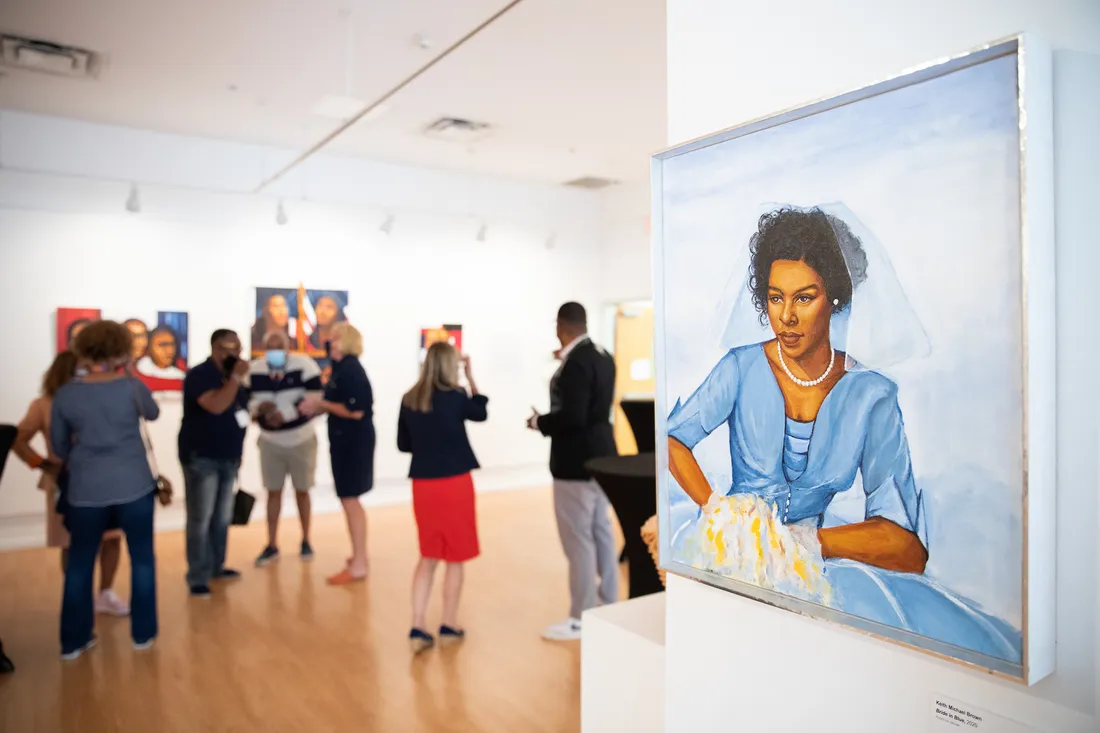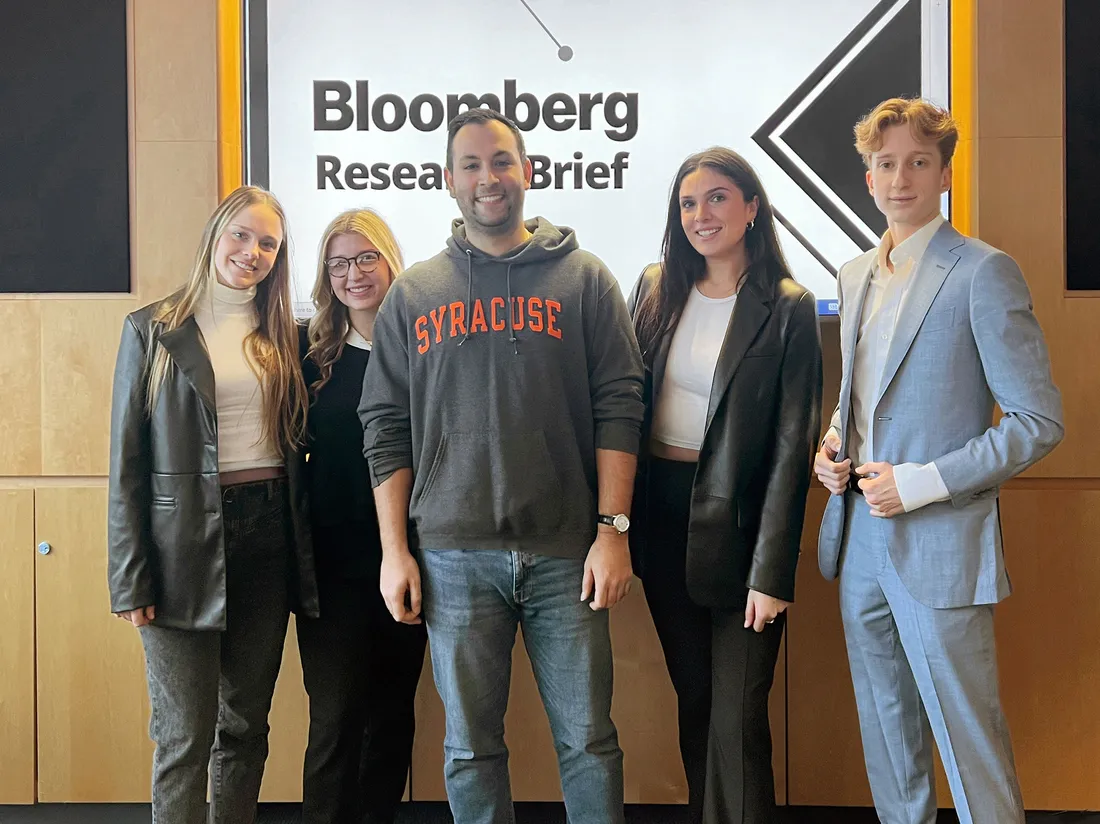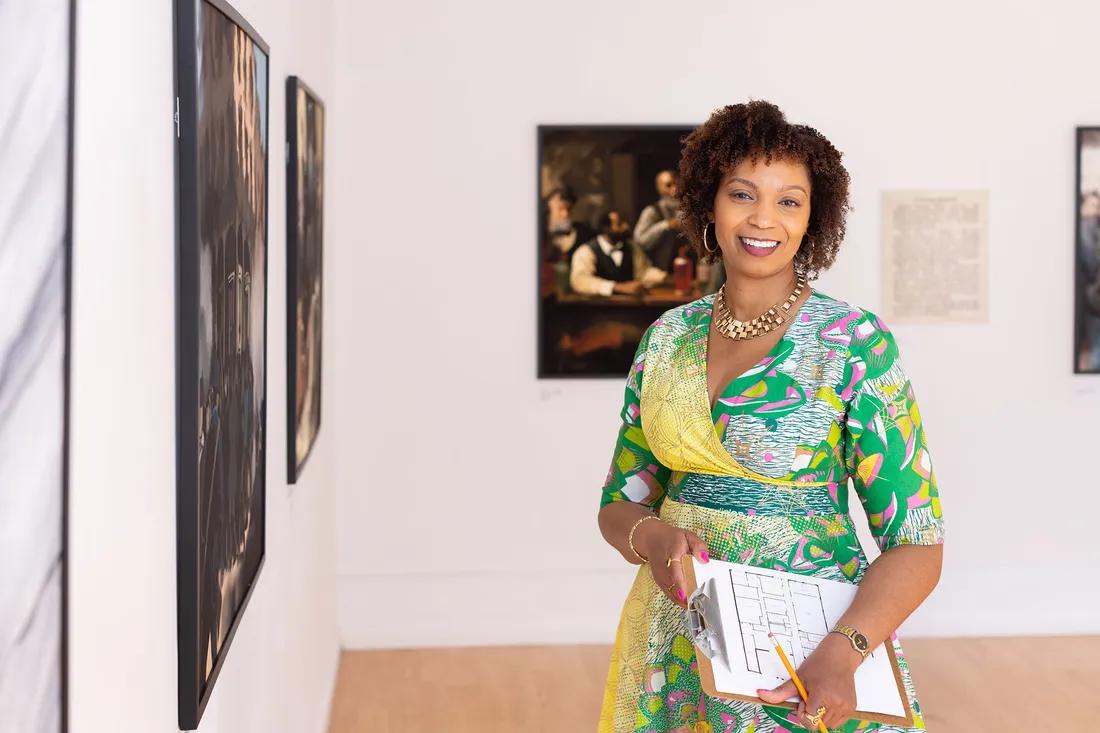
The integration of academic inquiry and community engagement is a central component in how Syracuse University Professor Tanisha Jackson conceives her work. “I’m an advocate of innovation, and innovative scholarship, where we’re asking how our work can have real meaning in the lives of people beyond the University,” she says.
In her multifaceted role as executive director of the Community Folk Art Center (CFAC) and professor in the College of Arts and Sciences’ Department of African American Studies, Jackson puts this principle into practice every day, developing and supporting the reciprocal benefits of engagement between the University and wider communities.
I’m an advocate of innovation, and innovative scholarship, where we’re asking how our work can have real meaning in the lives of people beyond the University.
Professor Tanisha Jackson
Black Women Artists and Wellness Work
Jackson’s scholarship has always oriented toward communities beyond the university. While her academic background spans wide-ranging degrees in English, business, African American studies and arts education, the constant has been her concern about the representation of Black people in visual culture and literature, and an interest in the intersection of art with individual and community health. “My work has always centered Black women and what happens when Black women articulate their own voices, creatively,” she says.
“I see Black women artists as wellness workers,” Jackson explains. “When I interview women about why they make art and what role it plays in their lives, they tell me it is first and foremost for themselves—to save themselves. Many studies have explored how Black women take positions to claim and cultivate their mental and emotional health. Creating art is part of this.”
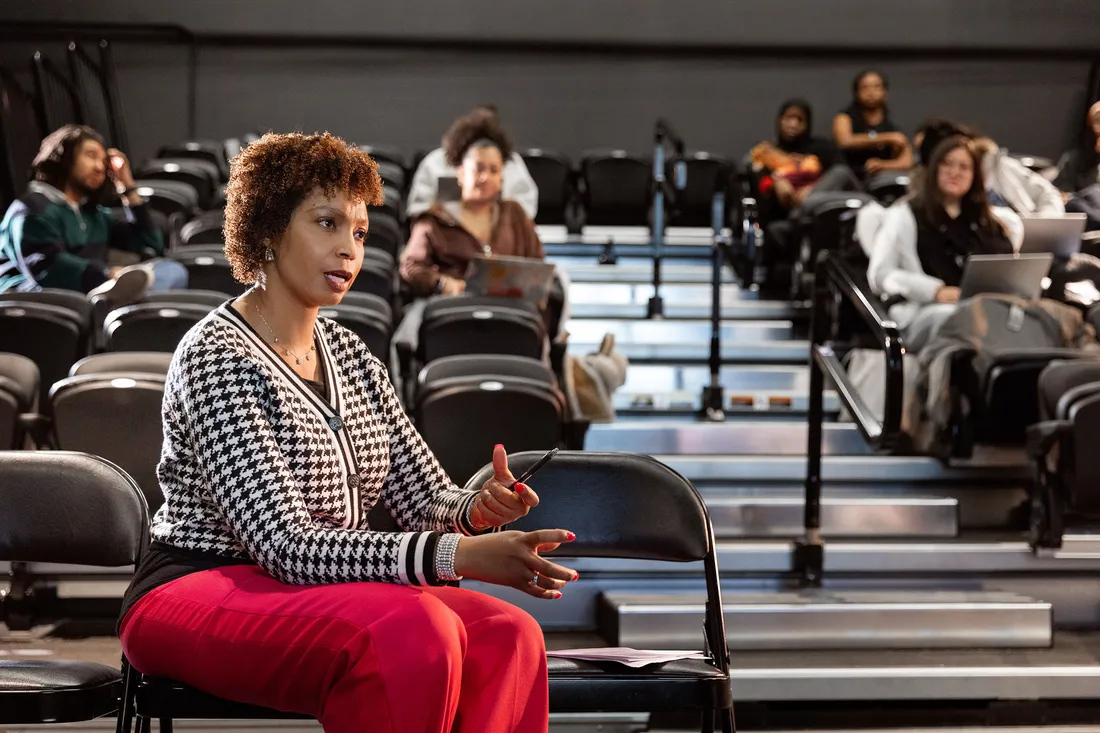
Tanisha Jackson’s research and teaching focus on the works of Black artist and the impact of Black representation in visual culture.
Black women artists contribute to healing within their communities as well, Jackson says. “Many of these artists are reflecting and representing people who are often not represented in mainstream arts spaces. Through participatory arts projects, they’re including people within their surrounding community. And, through their work, Black women artists address issues that impact their communities,” she explains.
Jackson points out that what Black women artists do for wellness is particularly significant considering the health disparities—including lack of access to address emotional and physical needs—that exist for Black women as a demographic. “As a form of self-care, Black women artists as individuals and Black women artists coming together as a collective speak to those disparities,” she says.
My work has always centered Black women and what happens when Black women articulate their own voices, creatively.
Professor Tanisha Jackson
And what motivates her own work, Jackson says, is her commitment to support these artists and the critical value of their creative work. “I’m interested in highlighting and amplifying their voices, and also highlighting stories that show Black women are survivors—that celebrate how we continue to thrive—despite some insurmountable odds.”
Representation and Community Engagement
Jackson says what she appreciates most about her role at CFAC—which was founded in 1972 as a community-oriented extension of the African American studies department—is that she is in a position to make opportunities for others, and to foster the integration of the University and wider communities.
CFAC is located physically, as well ideologically, at the intersection of the University and the City of Syracuse. CFAC hosts exhibits, performances, lectures by visiting artists and scholars and programming like music lessons, writing workshops, and dance and art classes for youth and adults. CFAC programs draw attendance from both University and regional communities.
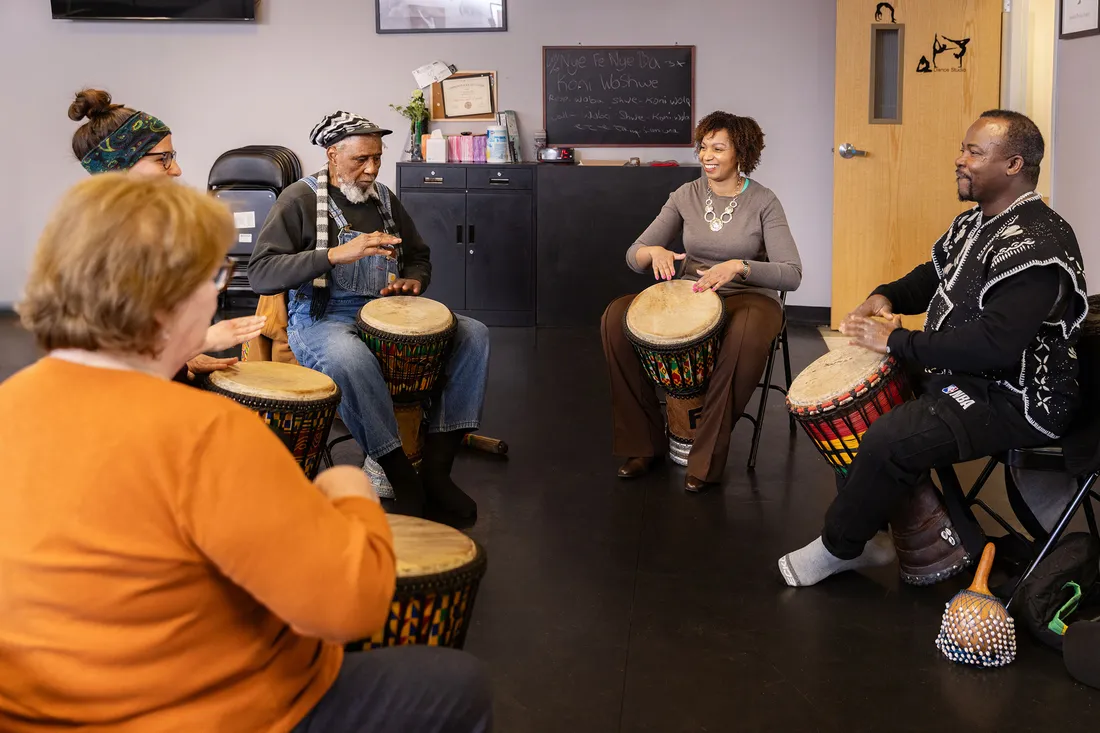
As executive director of the Community Folk Art Center, a public-facing extension of the Department of African American Studies, Jackson oversees a range of exhibits, events and classes open to the University community and the public, such drum lessons led by local instructor David ‘Este’ Nyadedzor (far right).
For Jackson, it was an intentional decision to teach her University courses—which focus on Black representation and art—in the CFAC building. Her students learn about Black artists and consider issues of Blackness in visual culture within a space that has been committed to showcasing and supporting artists from the African diaspora, and providing arts programming the public, for more than 50 years.
“Let’s pause here and take a look at what this filmmaker is really saying,” Jackson says to a group of students in a recent class delving into works by Black filmmakers from the early years of cinema. She walks her students through an analysis of how the film they were viewing used emerging narratives of American identity and patriotism in the WWII era to challenge prevailing stereotypes about Black people. And then, when class ends, the students file past a gallery showing of a local young artist’s work about a Black entrepreneur during the Erie Canal era, and flyers welcoming them to join members of the communities around them in poetry slams, drumming workshops and conversations exploring the intersection of Muslim and Black identities in the same space they’ve just had class.
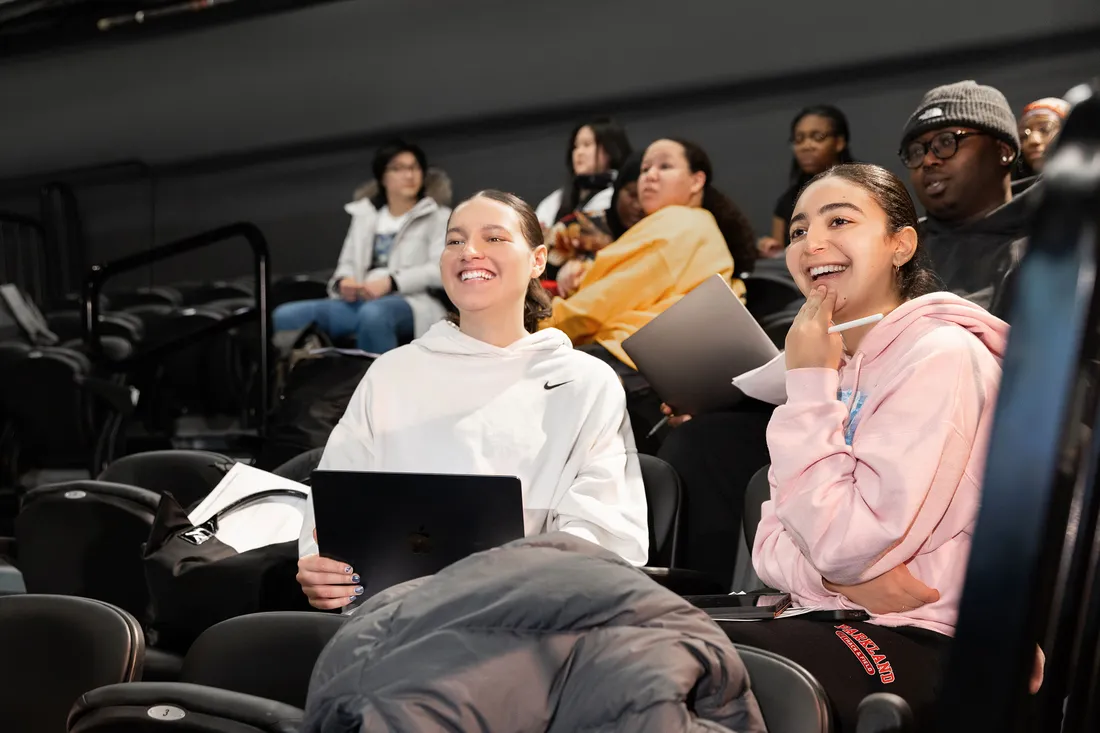
Emily Saad ’24 (front row, right) says Professor Jackson’s course has clarified her career aspirations. “I want to be part of uplifting marginalized voices in the entertainment industry,” she says.
“Having our class in the Community Folk Art Center breaths life into what we’re studying,” says Emily Saad ’24, a dual major in advertising and finance. “We get to feel like we're part of the community. While we’re taking our class, there are often kids there for their afterschool programs, and we’re surrounded by the work of incredible artists we might never have heard of if we’d just stayed on campus.” Saad says she was initially drawn to Jackson’s course on Black representation in film because she wanted to learn more about an industry she’s interested in, but it has also solidified her career aspirations. “I want to be part of uplifting marginalized voices in the entertainment industry,” she says. “Learning about Black filmmakers and artists who really challenged and changed perceptions through their work—that’s been very inspiring.”
Learning about Black filmmakers and artists who really challenged and changed perceptions through their work—that’s been very inspiring.
Emily Saad '24
Doing the Work and Supporting Others
In her commitment to contextualize scholarship in terms of the value it can bring to communities outside academic spaces, Jackson says she is reflecting an intention built into African American studies as a discipline. “One of the objectives of Black studies is that our scholarship expands beyond the classroom and has impact in the community that leads to social change,” she says. And, as a creator, teacher and supporter of the arts, Jackson relishes the chance to fulfil this intention and actively nurture the individual and communal healing made possible by creative expression.

